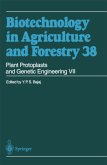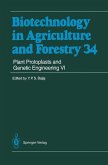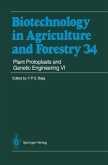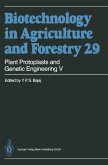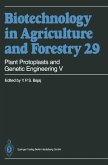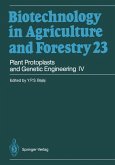Plant protoplasts have proved to be an excellent tool for in vitro manipulation, somatic hybridization, DNA uptake and genetic trans formation, and for the induction of somac1onal variation. These studies reflect the far-reaching impact of protoplast research in agriculture and forest biotechnology. Taking these aspects into consideration, the series of books on Plant Protoplasts and Genetic Engineering provides a survey of the literature, focusing on recent information and the state of the art in protoplast manipulation and genetic transformation. This book, Plant Protoplasts and Genetic Engineering VII, like the previous six volumes published in 1989, 1993, 1994, and 1995, is unique in its approach. It comprises 27 chapters dealing with the regeneration of plants from protoplasts, and genetic transformation in various species of Agrostis, Allium, Anthriscus, Asparagus, Avena, Boehmeria, Carthamus, Coffea, Funaria, Geranium, Ginkgo, Gladiolus, Helianthus, Hordeum, Lilium, Lithospermum, Mentha, Panax, Papaver, Passiflora, Petunia, Physcomi trella, Pinus, Poa, Populus, Rubus, Saintpaulia, and Swertia. This book may be of special interest to advanced students, teachers, and research scientists in the field of plant tissue culture, molecular biology, genetic engineering, plant breeding, and general biotechnology. New Delhi, June 1996 Professor y. P. S. BAJAJ Series Editor Contents Section I Regeneration of Plants from Protoplasts 1. 1 Regeneration of Plantlets from Protoplasts of Allium cepa (Onion) E. E. HANSEN, J. F. HUBSTENBERGER, and G. C. PHILLIPS (With 3 Figures) 1 Introduction . . . . . . . . . . . . . . . . . . . . . . . . . . . . . . . . . . . . 3 2 Protoplast Isolation . . . . . . . . . . . . . . . . . . . . . . . . . . . . . . . 4 3 Protoplast Culture . . . . . . . . . . . . . . . . . . . . . . . . . . . . . . . . 8 4 Regeneration of Plantlets . . . . . . . . . . . . . . . . . . . . . . . . . . . 9 5 Summary. . . . . . . . . . . . . . . . . . . . . . . . . . . . . . . . . . . . . . .


